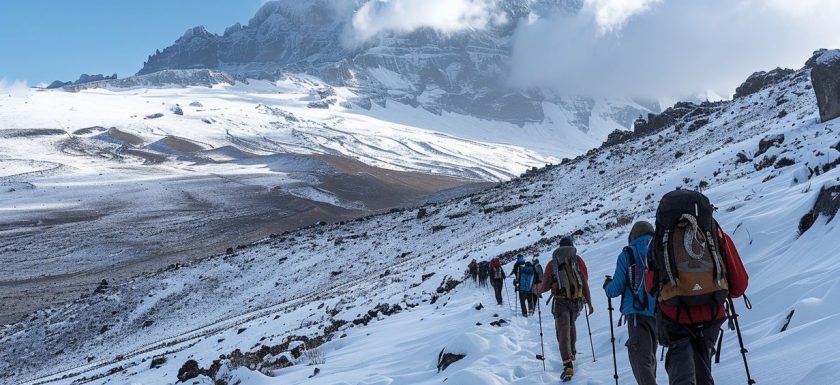
Mount Kilimanjaro, the highest peak in Africa, is a majestic and challenging mountain that attracts adventurers from around the world.
In this article, we will explore the basics of Kilimanjaro, including its location and elevation. We will also discuss the different routes available for climbing, as well as the physical requirements and best times to attempt this epic journey.
From the challenges of altitude sickness to the rewards of stunning views, climbing Kilimanjaro is a once-in-a-lifetime experience that tests both body and mind. Join us as we uncover the exhilarating adventure that awaits those who dare to conquer this iconic peak.
Key Takeaways:
- Climbing Kilimanjaro is physically demanding and requires a high level of fitness and preparation.
- The hardest route to climb Kilimanjaro is the Western Breach route, while the easiest is the Marangu route.
- While the challenges of climbing Kilimanjaro are many, the rewards, such as stunning views and personal achievement, make it a worthwhile experience.
What is the Elevation of Kilimanjaro?
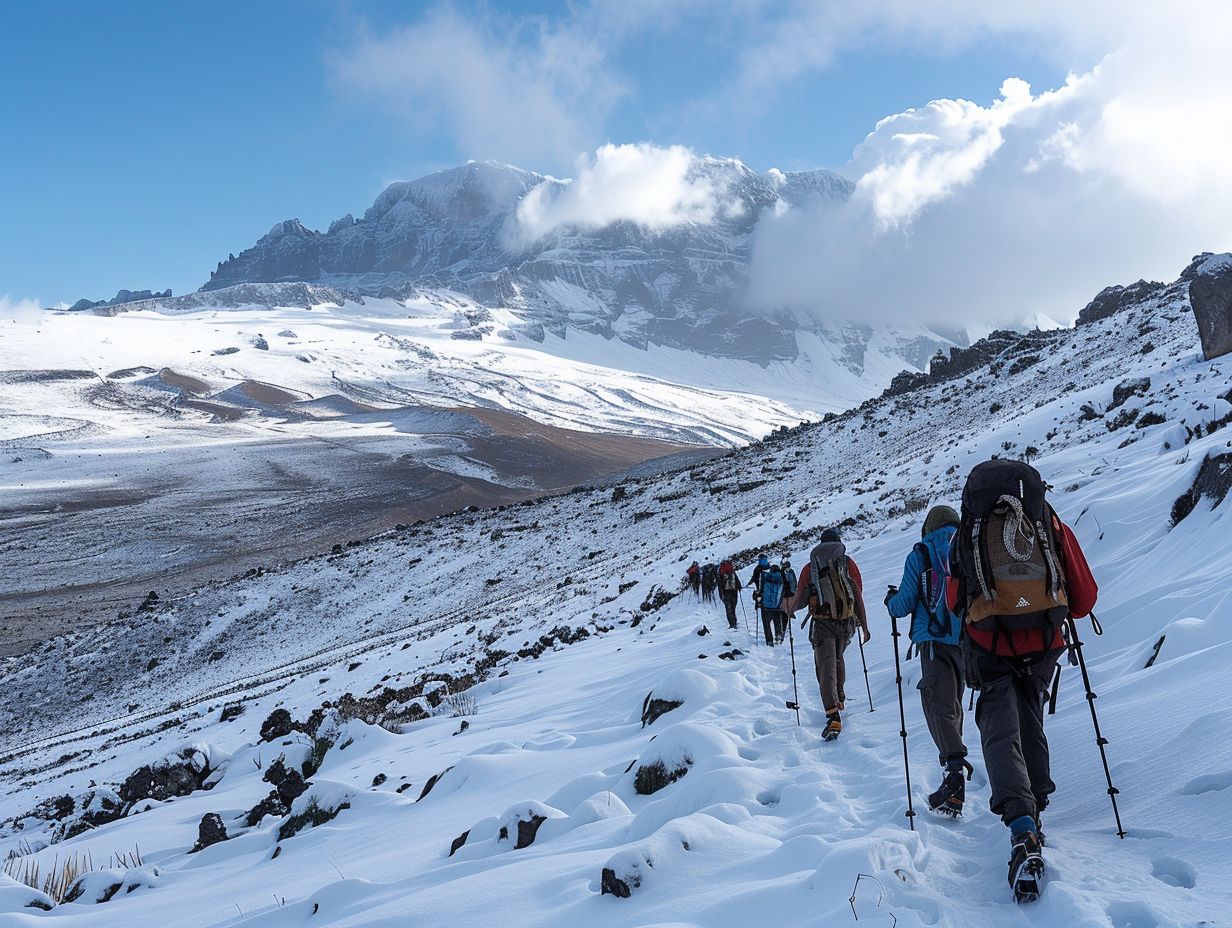
Kilimanjaro’s elevation reaches an impressive height of approximately 19,341 feet (5,895 meters) above sea level, making it not only the highest peak in Africa but also a significant high-altitude challenge for climbers.
At this height, climbers face numerous challenges due to the low oxygen levels, extreme cold, and altitude sickness. The lack of oxygen at higher elevations can lead to fatigue, dizziness, and potentially life-threatening conditions if not properly acclimatized.
The rapid ascent to such heights increases the risk of altitude-related illnesses like pulmonary or cerebral edema. To mitigate these risks, climbers need to undergo a gradual acclimatization process, allowing their bodies to adjust to the decreasing oxygen levels at higher altitudes.
What are the Different Routes to Climb Kilimanjaro?
Kilimanjaro offers various routes for climbers to reach its summit, each presenting its own challenges and unique experiences. From the Machame route to the Lemosho route, adventurers can choose the path that aligns best with their preferences and skill levels.
While the Machame route, also known as the “Whiskey Route,” is one of the most popular options, renowned for its scenic beauty and somewhat steep terrain the Lemosho route, often considered the most picturesque, provides a more gradual ascent, allowing for better acclimatization.
The Marangu route, sometimes dubbed the “Tourist Route,” offers hut accommodations along the way, making it a favorite for those seeking more comfort during the trek.
For the more experienced climbers, the Northern Circuit presents the longest and most in-depth path, circling almost the entire mountain.
Which Route is the Easiest to Climb?
Among the routes on Kilimanjaro, the Marangu route is often considered the easiest to climb due to its gradual ascent and facilities along the way, providing a more comfortable experience for climbers.
The Marangu route, also known as the ‘Coca-Cola route,’ stands out for its well-maintained huts that offer shelter and bedding, making it a popular choice for those seeking a less rugged adventure.
Unlike alternative paths, Marangu provides a less demanding terrain with a steady gradient, allowing climbers to acclimatize gradually, reducing the risk of altitude sickness.
The route also boasts lush landscapes and diverse flora, adding to the scenic beauty that accompanies the journey. The presence of porters to carry equipment and guides to navigate the trail enhances the overall support available on this route.
Which Route is the Hardest to Climb?
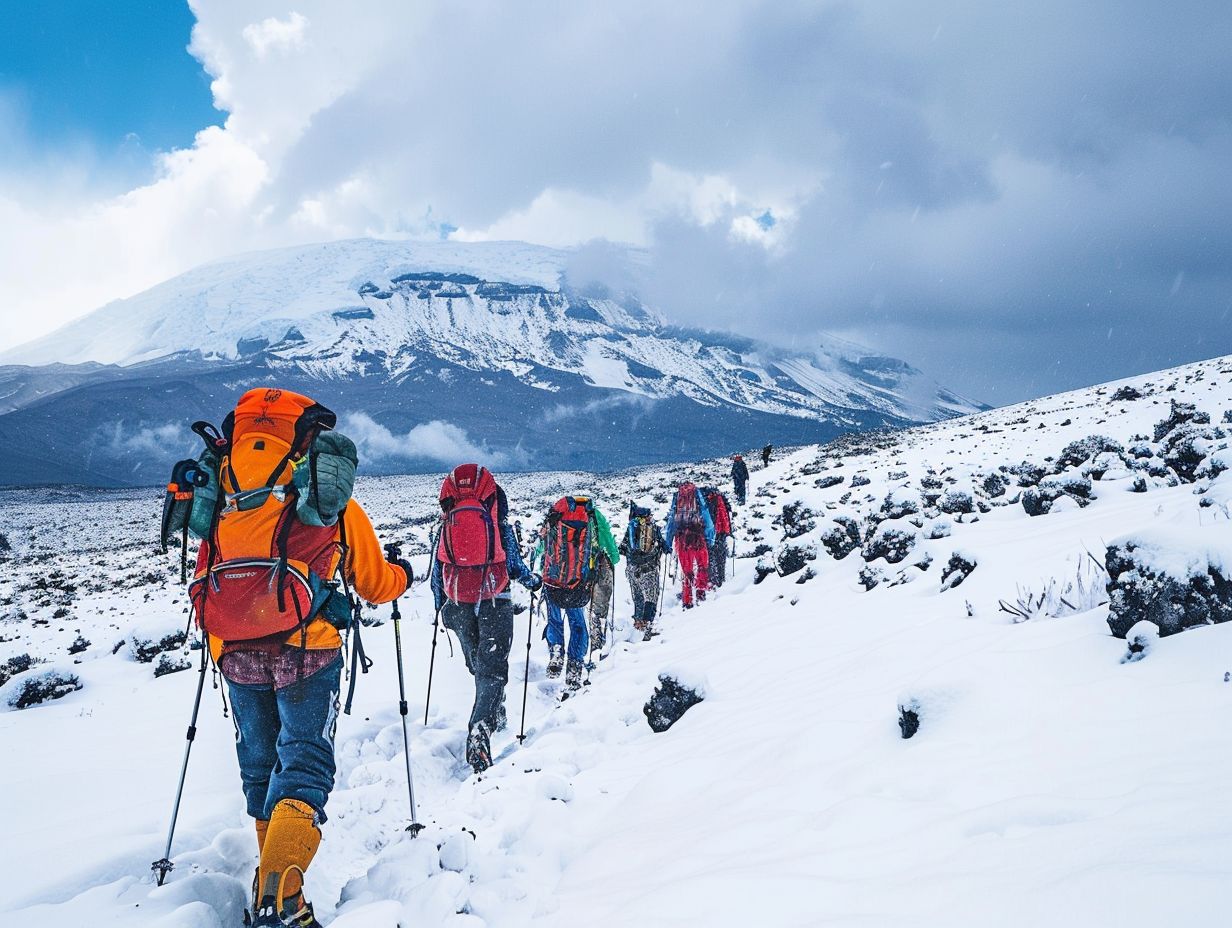
For those seeking a more challenging expedition, the Umbwe route on Kilimanjaro is renowned for its steep terrain and demanding ascent, making it one of the toughest routes to conquer on the mountain.
The Umbwe route is not for the faint of heart, as it requires a high level of physical fitness and mental determination to navigate its vertical sections. With its rapid altitude gain, climbers often face the effects of altitude sickness, adding another layer of difficulty to the journey.
The route lacks gradual acclimatization opportunities, posing a greater risk to climbers in terms of altitude-related ailments. Its direct and challenging climb tests even experienced trekkers, demanding careful planning and strategic pacing to reach the summit successfully.
What are the Physical Requirements for Climbing Kilimanjaro?
Climbing Kilimanjaro demands a good level of physical fitness and endurance to cope with the altitude and long hours of trekking. Adequate training and preparation are essential to increase the chances of a successful summit.
Preparing for a Kilimanjaro ascent involves a combination of cardiovascular and strength training exercises to improve stamina and muscle endurance. Regular aerobic workouts like running, cycling, or hiking uphill can help simulate the demands of high-altitude trekking.
Incorporating strength training to build leg muscles and core stability is crucial for navigating rough terrain.Hydration plays a vital role in acclimatization, so focusing on increasing fluid intake during training is key.
What is the Recommended Fitness Level?
A good recommended fitness level for climbing Kilimanjaro includes regular cardiovascular exercise, strength training, and endurance building activities to prepare the body for the physical demands of the ascent.
To further enhance your fitness for climbing Kilimanjaro, it is crucial to focus on activities that target key muscle groups used in mountaineering, such as legs, core, and upper body.
Incorporating exercises like squats, lunges, pull-ups, and planks can help build the necessary strength and stability required for navigating challenging terrains.
Along with physical conditioning, mental preparation plays a vital role in successfully conquering the summit of Kilimanjaro. Developing a positive mindset, resilience, and mental endurance is essential for overcoming the various obstacles and altitude-related challenges you may face during the climb.
What Type of Training Should be Done?
Effective training for a Kilimanjaro climb should focus on cardiovascular fitness, strength training, hiking with a loaded pack, and altitude simulation exercises to acclimatize the body to high altitudes.
Cardio exercises play a crucial role in enhancing endurance and stamina, essential for tackling the prolonged physical demands of ascending Kilimanjaro. Include activities like running, cycling, and stair climbing to improve your cardiovascular system.
Strength training is vital for building the necessary muscle strength and stamina required for carrying gear and navigating challenging terrains. Focus on core, lower body, and upper body exercises to prepare your muscles for sustained effort.
Weighted hiking, where you carry a backpack with gradually increasing weight, helps simulate the conditions of the actual climb. This practice conditions your muscles and familiarizes your body with the additional load.
Altitude adaptation is a critical component considering Kilimanjaro’s soaring elevation. Incorporate altitude simulation exercises such as breathing techniques, interval training, and exposure to high altitudes to prepare your body for the decreased oxygen levels at higher altitudes.
What are the Best Times to Climb Kilimanjaro?
The optimal times to climb Kilimanjaro are during the dry seasons, typically from late June to early October and from late December to early March, when the weather conditions are more stable, and visibility is clearer.
During these months, climbers can enjoy milder temperatures, which make the ascent more comfortable and less strenuous. The clear skies offer breathtaking panoramic views, enhancing the overall trekking experience.
It is crucial to avoid the rainy seasons, as the trails can become slippery and more challenging to navigate, increasing the risk of accidents and hindering progress. The dry seasons coincide with lower precipitation levels, ensuring a drier terrain and reducing the possibility of encountering unexpected weather disruptions.
What are the Challenges of Climbing Kilimanjaro?
Climbing Kilimanjaro presents several challenges, including altitude sickness, unpredictable weather conditions, extended hours of hiking, and navigating through rugged terrains, all of which require proper preparation and acclimatization.
One major obstacle for climbers on Kilimanjaro is altitude sickness, also known as acute mountain sickness (AMS), which can affect individuals at high elevations.
The reduced oxygen levels at higher altitudes can lead to symptoms such as headaches, nausea, and fatigue, making it crucial for climbers to acclimatize slowly along the ascent.
The weather on Kilimanjaro is highly unpredictable, with conditions changing rapidly from hot and sunny to cold and snowy. Climbers must be prepared for sudden drops in temperature, heavy rainfall, and even potential blizzards which can pose additional challenges during the trek.
The extended hours of hiking each day, usually ranging from 4 to 8 hours, require physical endurance and mental fortitude. Climbers need to maintain a steady pace, stay hydrated, and take breaks when needed to conserve energy for the long ascent.
Along with altitude and weather, the rugged terrains on Kilimanjaro, including steep inclines, rocky paths, and icy sections, demand careful navigation and sturdy footwear. The varying landscapes, from lush rainforests to barren alpine deserts, present a diverse set of challenges that require agility and balance to conquer.
Altitude Sickness
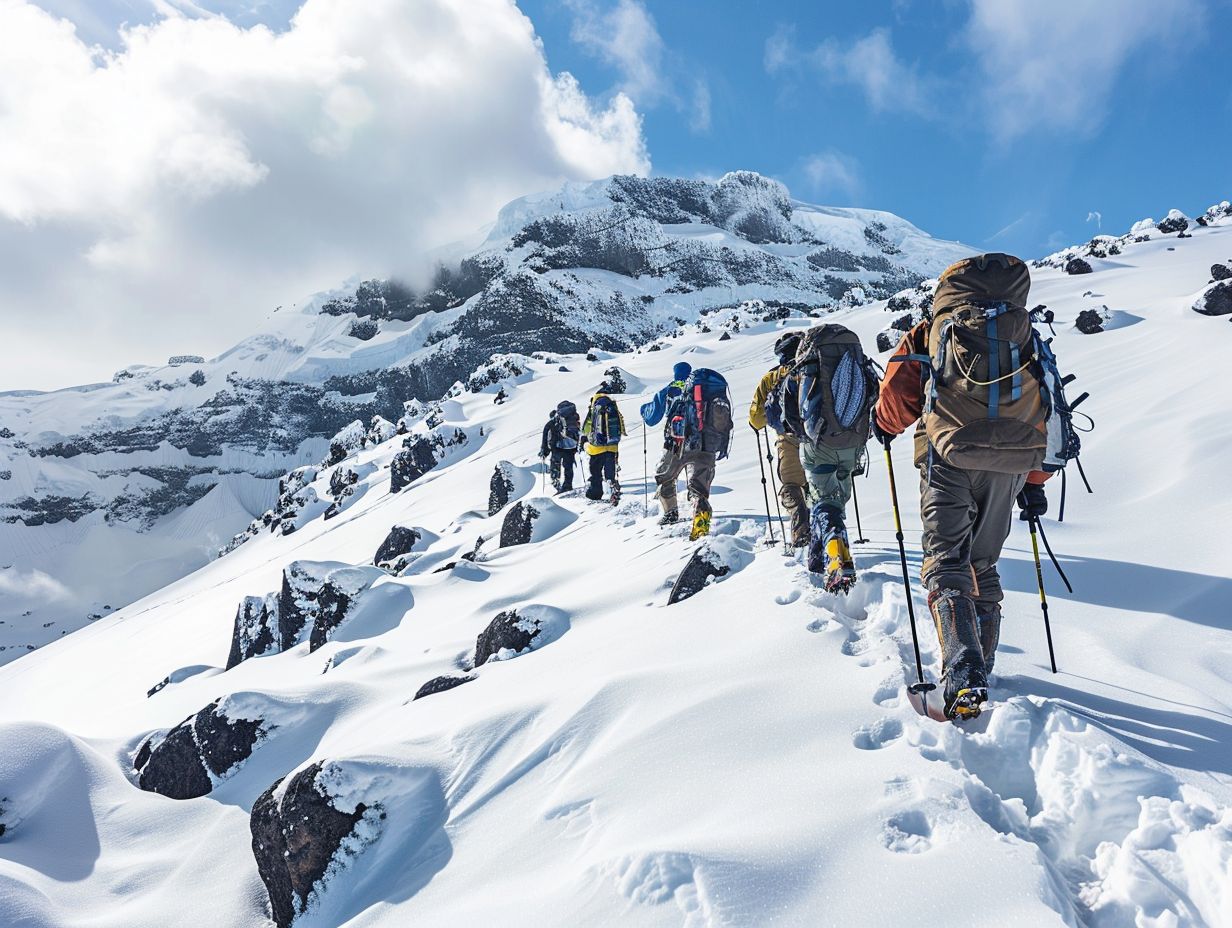
Altitude sickness, characterized by symptoms like headaches, nausea, and fatigue, is a common challenge faced by climbers on Kilimanjaro due to the rapid gain in altitude. Adequate acclimatization and oxygen intake are crucial to mitigate its effects.
At higher altitudes, the air pressure and oxygen levels decrease, making it harder for the body to function efficiently. This lack of oxygen at higher elevations can result in altitude sickness. The symptoms typically start to manifest when ascending above 8,000 feet (about 2,400 meters).
Feeling dizzy or lightheaded, rapid heartbeat, and loss of appetite are also common indicators of altitude sickness. Acute Mountain Sickness (AMS) is a mild form of altitude sickness, while High Altitude Pulmonary Edema (HAPE) and High Altitude Cerebral Edema (HACE) are more severe and life-threatening conditions.
Acclimatization is a key factor in preventing altitude sickness. Climbers are advised to ascend gradually, allowing the body time to adjust to the lower oxygen levels.
This can involve taking rest days during the climb, where individuals do not ascend higher but allow their bodies to acclimate to the current altitude.
Drinking plenty of water, avoiding alcohol, and eating a high-carbohydrate diet can also aid in acclimatization. Some climbers opt to take medication like acetazolamide to help prevent altitude sickness.
Weather Conditions
The weather conditions on Kilimanjaro can be highly unpredictable, with rapid changes in temperature, precipitation, and wind speeds posing challenges to climbers. Being prepared for varying weather scenarios is essential for a successful summit.
One of the most crucial aspects of climbing Kilimanjaro is understanding how different weather fluctuations can impact the climb. Experienced climbers often stress the importance of acclimatization to prevent altitude sickness, which is exacerbated by extreme weather changes.
Without proper gear, such as insulated clothing for colder temperatures or UV protection for intense sunlight, climbers may find themselves at risk of hypothermia or sunburn. Having a well-thought-out contingency plan in case of sudden storms or unexpected weather extremes is vital to ensure the safety of all expedition members.
Long Hours of Hiking
The extended durations of hiking on Kilimanjaro, especially on summit nights, can be physically demanding and mentally taxing for climbers. Endurance and mental fortitude are essential to overcome the fatigue associated with prolonged trekking.
During long hours of hiking, climbers face various challenges such as altitude sickness, extreme weather conditions, and rugged terrain, which can wear down even the most experienced trekkers.
To combat these obstacles, it’s crucial for hikers to pace themselves effectively, staying hydrated, taking short breaks, and listening to their bodies to prevent exhaustion.
Mental preparation plays a significant role in enduring the hardships of the journey. Techniques like visualization, positive self-talk and mindfulness can help climbers stay focused and motivated, especially during demanding sections of the trek.
By cultivating a strong mental attitude and physical resilience, climbers can increase their chances of successfully reaching the summit of Kilimanjaro.
Difficult Terrain
Kilimanjaro’s rugged terrain, ranging from rocky paths to steep inclines, presents climbers with varied challenges that demand agility and technical skill to navigate safely. Tackling the diverse topographic features requires careful planning and focused determination.
Traversing the rocky paths of Kilimanjaro entails navigating uneven surfaces, strategically placing each step to maintain balance and avoid potential hazards.
As climbers ascend the steep inclines, the physical strain intensifies, testing their endurance and strength. The landscape shifts dramatically, from dense forests to barren volcanic slopes, requiring adventurers to adapt continuously to changing conditions.
The altitude adds an extra layer of difficulty, with its thinning air making each breath a conscious effort. The combination of physical exertion and high elevation calls for proper acclimatization and monitoring of symptoms of altitude sickness, such as headaches and nausea.
What are the Rewards of Climbing Kilimanjaro?
Climbing Kilimanjaro offers a host of rewards, including breathtaking panoramic views from the summit, a sense of personal achievement in conquering a challenging peak, and the opportunity to immerse oneself in the rich cultural experiences of Tanzania.
One of the most gratifying aspects of ascending Kilimanjaro is the unparalleled feeling of standing on the ‘Roof of Africa,’ gazing out at the vast expanse of the African landscape spread out below.
The emotional fulfillment of reaching the summit after days of rigorous trekking cannot be overstated. The interactions with local guides and porters during the climb provide a unique insight into the indigenous culture and traditions of the region.
The blend of physical accomplishment, breathtaking scenery, and cultural immersion makes the Kilimanjaro climb a truly unforgettable experience.
Stunning Views
Reaching the summit of Kilimanjaro offers climbers unparalleled views of the surrounding landscapes, including the vast African savannah, lush rainforests, and distant horizons, creating a visual spectacle that is both awe-inspiring and humbling.
As climbers ascend to the peak, they are greeted with a panorama of diverse ecosystems unfolding before them. The transition from the rich, green rainforests below to the rocky alpine deserts above is a sight to behold.
At the summit, the sheer scale of the landscape becomes apparent, with the curvature of the Earth visible on clear days and the expansive plains stretching out like a patchwork quilt beneath the sky.
From this vantage point, adventurers can witness the play of light and shadow on the slopes, the ever-changing hues of the sky as the sun rises or sets, and the distant silhouettes of neighboring peaks piercing the horizon.
The beauty of Kilimanjaro’s summit is not just in its natural grandeur but also in the sense of accomplishment and connection to the Earth that it instills in those who brave its heights.
Personal Achievement
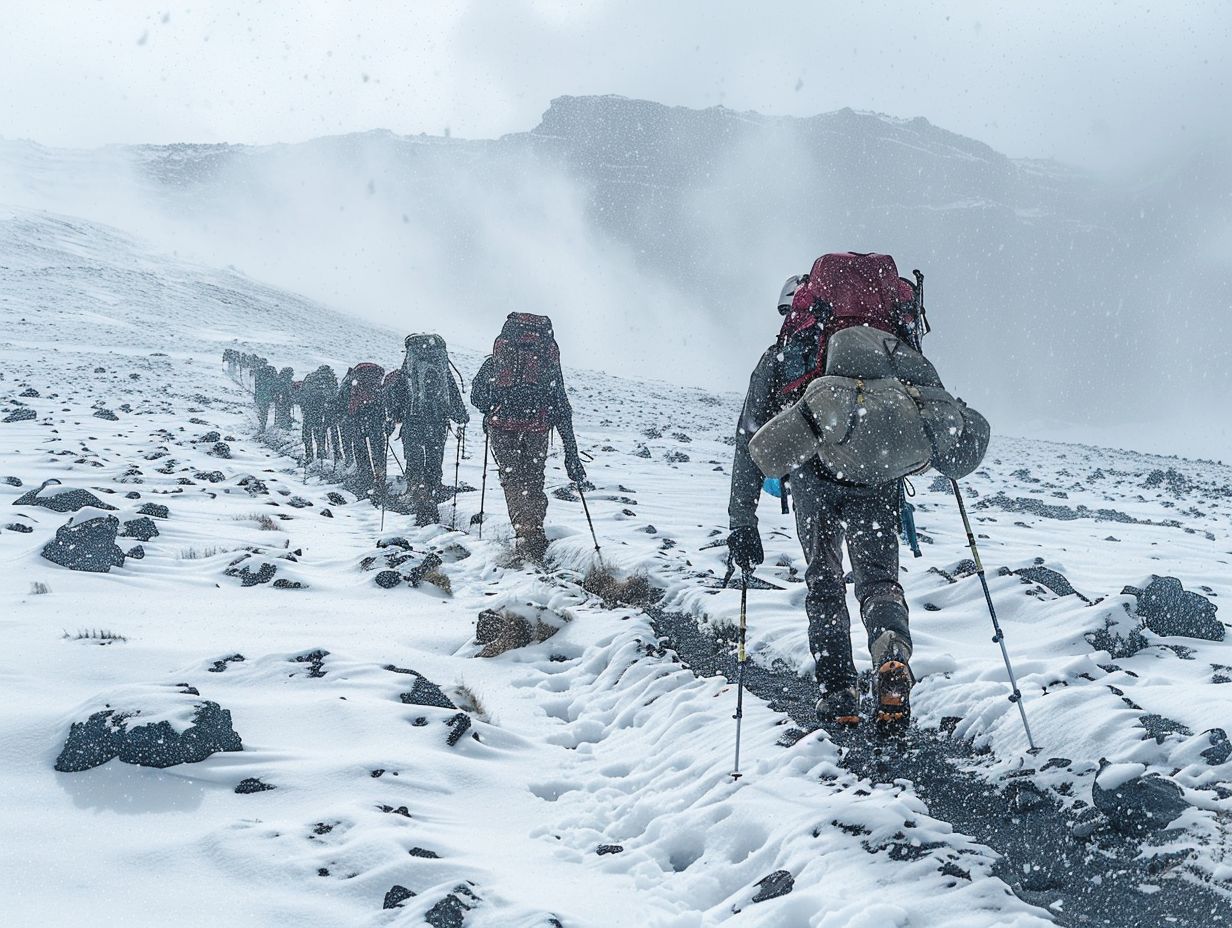
Reaching the summit of Kilimanjaro is a remarkable feat that instills a profound sense of personal accomplishment and triumph, symbolizing the perseverance, resilience, and determination required to overcome the mountain’s challenges.
Climbing Kilimanjaro goes beyond physical achievement; it delves into the realms of self-discovery and emotional growth. Each step towards the peak not only tests your physical stamina but also challenges your mental fortitude, pushing you to your limits and beyond.
The journey up the mountain is not just a climb; it’s a profound introspection into your own capabilities, fears, and strengths. The sense of fulfillment that engulfs you as you stand at the summit is unparalleled, a testament to your unwavering spirit and determination.
Cultural Experience
Beyond the physical conquest, climbing Kilimanjaro provides an enriching cultural experience as climbers engage with local guides, interact with indigenous communities, and immerse themselves in the vibrant traditions and hospitality of Tanzania.
Connecting with local guides not only enhances the climbing experience but also offers a deeper insight into the region’s history and folklore.
These guides, often from ethnic groups like the Chagga or Maasai, share their knowledge and stories, enriching the journey with cultural significance. The interactions with indigenous communities allow climbers to witness age-old traditions and customs firsthand, fostering mutual understanding and respect.
From the rhythmic beats of traditional music and dance to the flavors of authentic Tanzanian cuisine, climbers are enveloped in a sensory tapestry that showcases the richness of the local culture.
The warm hospitality of the Tanzanian people, known for their welcoming spirit, leaves a lasting impression on climbers, creating bonds that transcend geographical boundaries.
Frequently Asked Questions
What is the difficulty level of climbing Kilimanjaro?
Based on the reference data, Kilimanjaro is classified as a moderately difficult mountain to climb. It requires a good level of physical fitness and mental preparation.
Is technical climbing experience necessary for Kilimanjaro?
No, technical climbing skills are not necessary for Kilimanjaro. However, some sections may require basic use of ropes and other equipment, which can be learned during the climb.
How long does it take to climb Kilimanjaro?
The average duration for climbing Kilimanjaro is 7-8 days. This allows for proper acclimatization and increases the chances of a successful summit.
What are the physical challenges of climbing Kilimanjaro?
The biggest physical challenges of climbing Kilimanjaro include high altitude, long distances, and varying terrain. It is important to train and prepare accordingly.
What is the success rate for climbing Kilimanjaro?
The overall success rate for climbing Kilimanjaro is around 65%. This can vary depending on factors such as route, group size, and individual fitness levels.
Can anyone climb Kilimanjaro?
While Kilimanjaro can be a challenging climb, it is suitable for people of varying ages and fitness levels. However, it is recommended to consult with a doctor before attempting the climb.